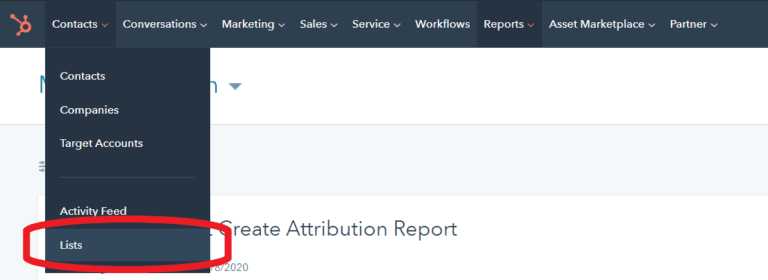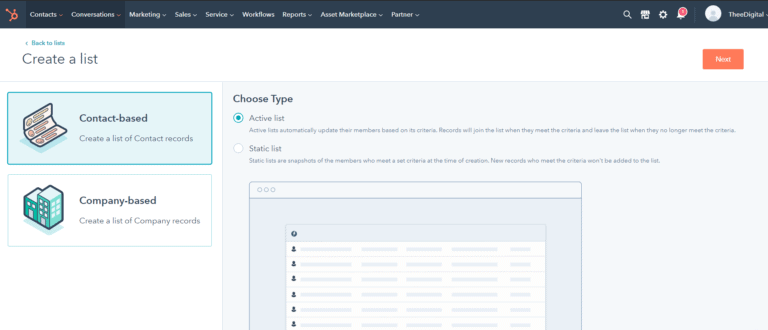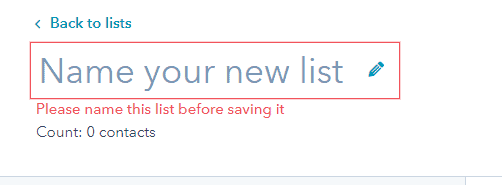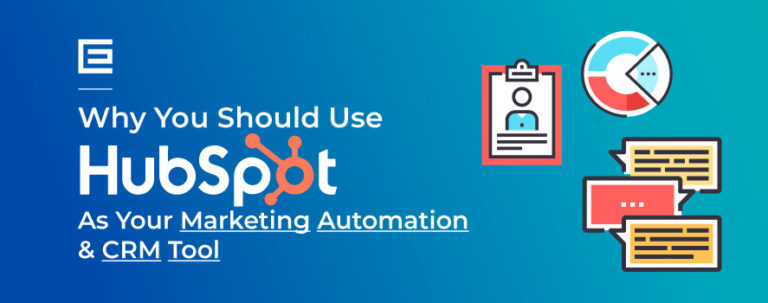In the fast-paced world of digital marketing, every interaction counts. To harness the full power of HubSpot’s lead-engagement tools, it’s crucial to grasp the nuances between two vital list types: active lists and static lists. While the distinction might seem straightforward, many marketers find themselves grappling with a lack of clarity when it comes to selecting the right kind of list for their campaigns.
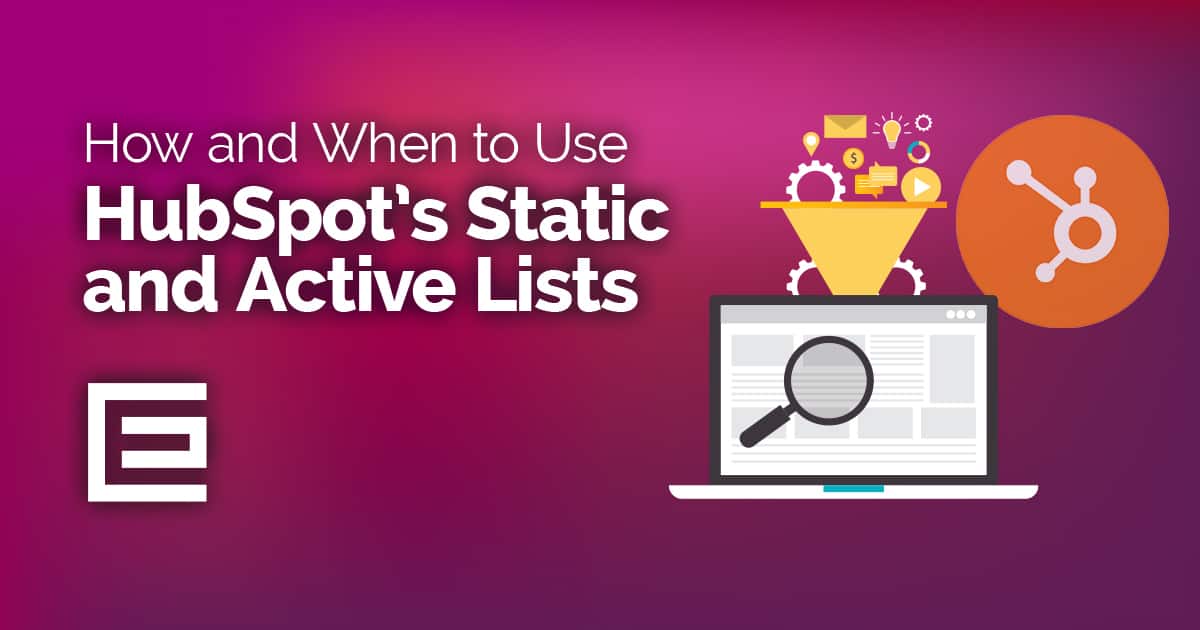
Static vs. Active Lists in Hubspot
Static lists are just that — unchanging. Unless you manually update them, your contact lists in Hubspot will not update when new criteria is met. They serve as a record of a group of contacts who met specific criteria at a certain time.
Active lists constantly evolve as specific criteria are met. These updates can be tied to a number of things, like contact location, industry, populating and combining contact lists based on existing ones, or lists created based on landing page forms. When new contacts meet criteria predetermined by active lists they automatically get added, and when contacts no longer meet the criteria associated with an active list they are removed.
Which Type of List to Use
Static Lists
Static lists are not as dynamic or customizable as active lists, but they still play a role in successful email marketing. They are mostly used for one-time emails, infrequent campaigns, and contact lists that don’t require frequent updating. Some examples of a static list are:
- Employee lists — you might want to send internal newsletters or other communication to your team. These static lists generally don’t change often.
- Registration lists for events, including no-show lists. These static lists can be helpful for sending follow-up information.
- Conference/networking event contacts — a static list is a good place to keep prospects’ information.
Active Lists
Active lists are crucial for email campaigns that involve multiple emails, with a list of contacts that needs frequent updating. You would use an active list in Hubspot for:
- Customer lists — if you’re sending any sort of updates or newsletters to your customers (and you really should be), you’ll need a current customer list. A dynamic list will add new customers and remove ex-customers to stay relevant.
- Interest targeting — an active list of people who have indicated interest in a topic can be used for future emails covering related topics.
- Block lists — you might want to limit certain contacts and avoid sending too many emails to clients. With an active list, you can identify people already registered for an event and avoid sending them further promotional emails regarding the same event.
- Free trial registrants — you could use a list to send periodic updates with tips and helpful information to free trial users. Adding these potential customers to an active list is an effective way to engage with potential leads.
With lists in HubSpot, your contact database can be organized and customized, providing quick overviews or detailed insight into sales leads. By filtering your lists using specific criteria — such as form submissions or page views — your team can take an informed and thoughtful approach with existing and potential clients.
Steps to Create Static and Active Lists With HubSpot
1. Create a New List:
2. Select List Criteria:
- In the left panel, set the criteria in the segmentation category you’ve chosen.
- Click Apply filter. A list of contacts will start populating on the right as you begin segmenting. This is a preview of the estimated number of contacts that will be added to your list.
- In the upper right, click Save. Your list may take a while to process.
3. Perform More Actions With Your List:
- To search for a specific contact in your list, use the search bar in the upper right.
- In the upper right, click the Actions dropdown menu to perform additional actions with your list:
- Edit columns
- Export
- Test a contact
- Create a report
- View list performance
- Re-sync list with Salesforce
- Use this list to limit Salesforce Sync
- In the upper left, click < Back to lists to return to your list dashboard. Here you’ll see your new list.
- Hover over the list and click Details to view additional information about your list.
- Click the More dropdown menu for the following options:
- Move to folder
- Clone
- Export
- View list performance
- Delete
Active lists are an effective tool for communicating between your marketing and sales teams. You can make a list with marketing qualified leads, and once they become sales qualified leads, they can be removed from the marketing list. It is crucial for marketers to transition new leads to sales as soon as they’re ready. Using workflows and active lists in HubSpot, you can help ensure this transfer does not get delayed.
How to Use Lists to Transfer Leads to Sales
- First use workflows in HubSpot to automatically assign marketing qualified leads to a lead owner — either dividing them equally amongst your sales team or assigning each to a specific lead.
- Then create an active list for new leads generated — an active list will automatically update when contacts that meet the criteria join the list, and when contacts that no longer meet the criteria are removed. You can group contacts by lead owner and stage, so that sales reps can see only marketing leads assigned to them.
Lists, a fundamental feature of HubSpot, aren’t just a set-it-and-forget-it tool. They are your dynamic arsenal for efficient customer engagement, lead generation, and seamless collaboration between marketing and sales. By exploring HubSpot’s guide on list creation and usage, you’ll uncover the key to maximizing your team’s productivity and elevating your marketing efforts.
Are you ready to transform your approach to lead engagement? Dive into the intricate world of active and static lists, and harness HubSpot’s powerful tools to supercharge your campaigns.
Get Help Managing Your Hubspot CRM
We can help you design and build out your Hubspot platform, consult on your inbound marketing strategy, and optimize your marketing automation. Reach out to our web design and digital marketing experts at 919-341-8901 or by sending us a message to discuss your goals and how we can help you meet them.
Tags: Content Marketing • HubSpot • Marketing Automation • Our Favorites


